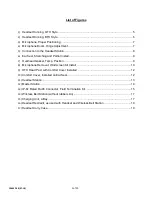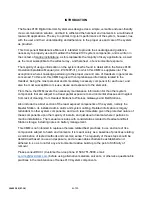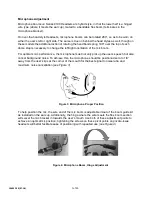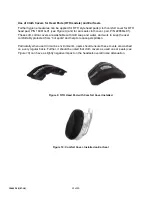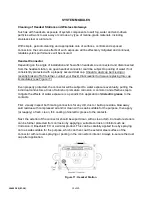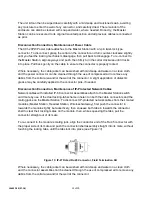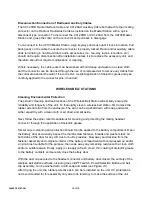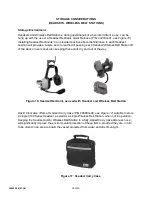
19602P-99 (07-18)
4 of 20
INTRODUCTION
The Series 9100 Digital Intercom System was designed as a simple, versatile and user-friendly
crew communication solution, and built to withstand the harshest environments in a multitude of
real-world applications. The key to optimal, long-term performance of the system, however, lies
with the user and their understanding and adherence to the proper use and care of the system
as provided.
This Component Maintenance Manual is intended to provide the knowledge and guidance
necessary to properly use and maintain the Series 9100 system components, and is written in
the context of
marine installations
, as this represents the majority of likely applications, as well
as the most susceptible to the widest array - and harshest - of environmental exposure.
The majority of usage information on the system itself is found in detail within the Series 9100
Operation/Installation Manual (doc. #19549P-31), to which this CMM is supplemental. The
exception is where knowledge pertaining to the proper use and care of Headsets in general are
concerned. To this end, this CMM begins with comprehensive information related to the
Headset, being the most personal and immediately necessary component for each user, and
also the most susceptible to misuse, abuse and exposure to the elements.
From there, the CMM covers the necessary maintenance information for the other system
components that are subject to at least partial exposure to environmental stresses and neglect
from lack of cleaning, from Headset Stations to Wireless Gateways and Belt Stations.
Also included is a brief section of the least exposed components of the system, namely the
Master Station, its installed add-in cards and system cabling. Related information is largely
redundant to other system components, and much less immediate given the protected nature of
these components upon the majority of installs, and just about universal where it pertains to
marine installations. The manual concludes with considerations related to Headset and Belt
Station storage, including notes on battery management.
This CMM is not intended to replace otherwise related best practices in use and care of like
components subject to harsh environments. It is meant solely as a baseline of practices relating
a combination of tested methods and common sense. The regularity of these steps should be
determined based on use and exposure, and a reasonable schedule be established and
adhered to, so as to not let any environmental residue build up to the point of difficulty of
removal.
Please consult DCCI (Customer Service phone #: 508-751-5800, email:
) before using alternative materials, solvents, or otherwise questionable
practices in the maintenance of Series 9100 system components.
Summary of Contents for 9100 SERIES
Page 2: ......




